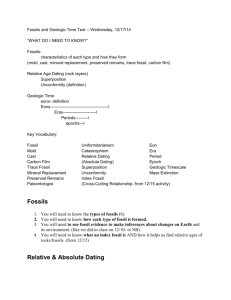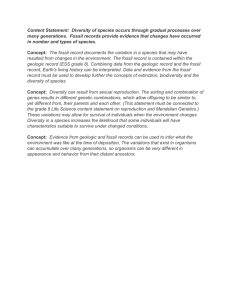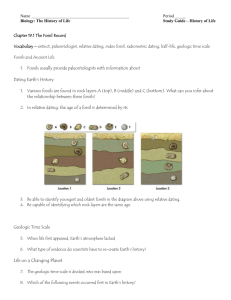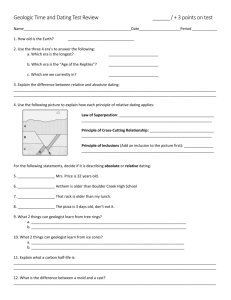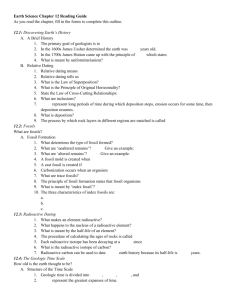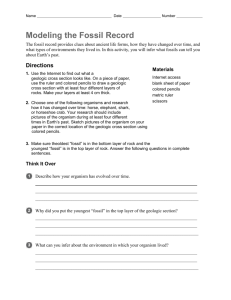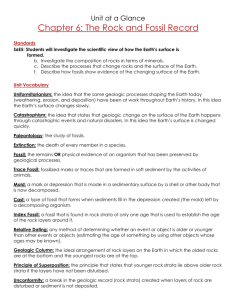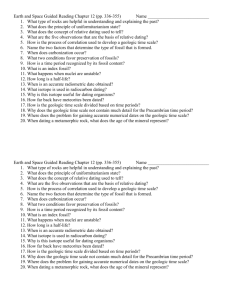REVIEW FOR CHAPTER 12key
advertisement
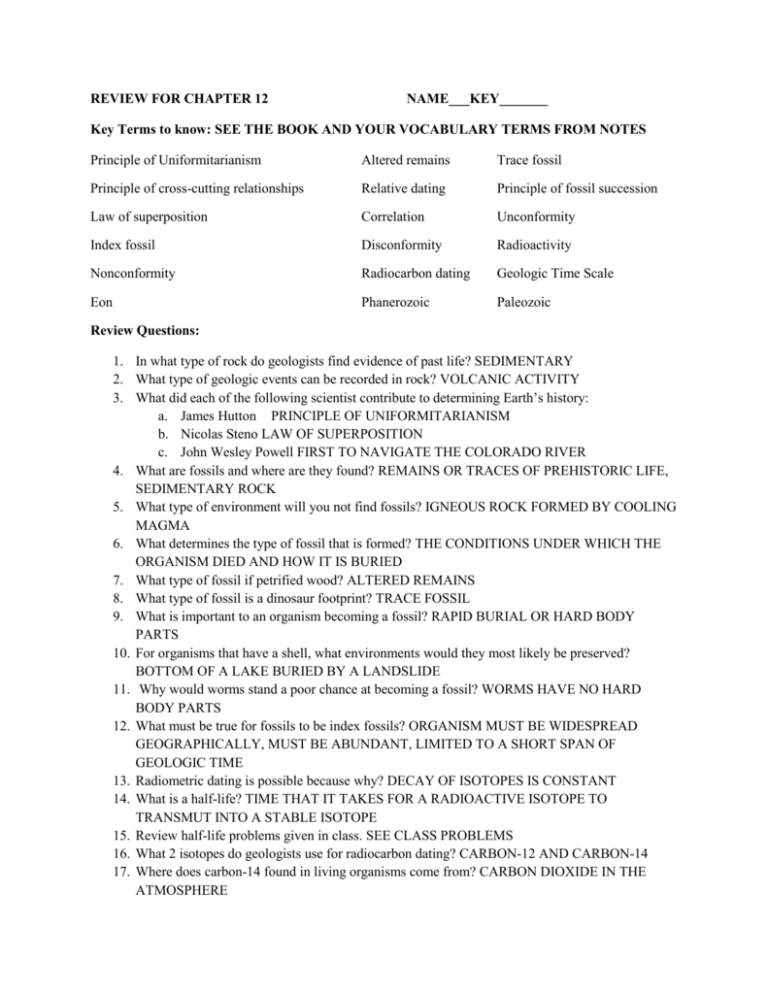
REVIEW FOR CHAPTER 12 NAME___KEY_______ Key Terms to know: SEE THE BOOK AND YOUR VOCABULARY TERMS FROM NOTES Principle of Uniformitarianism Altered remains Trace fossil Principle of cross-cutting relationships Relative dating Principle of fossil succession Law of superposition Correlation Unconformity Index fossil Disconformity Radioactivity Nonconformity Radiocarbon dating Geologic Time Scale Eon Phanerozoic Paleozoic Review Questions: 1. In what type of rock do geologists find evidence of past life? SEDIMENTARY 2. What type of geologic events can be recorded in rock? VOLCANIC ACTIVITY 3. What did each of the following scientist contribute to determining Earth’s history: a. James Hutton PRINCIPLE OF UNIFORMITARIANISM b. Nicolas Steno LAW OF SUPERPOSITION c. John Wesley Powell FIRST TO NAVIGATE THE COLORADO RIVER 4. What are fossils and where are they found? REMAINS OR TRACES OF PREHISTORIC LIFE, SEDIMENTARY ROCK 5. What type of environment will you not find fossils? IGNEOUS ROCK FORMED BY COOLING MAGMA 6. What determines the type of fossil that is formed? THE CONDITIONS UNDER WHICH THE ORGANISM DIED AND HOW IT IS BURIED 7. What type of fossil if petrified wood? ALTERED REMAINS 8. What type of fossil is a dinosaur footprint? TRACE FOSSIL 9. What is important to an organism becoming a fossil? RAPID BURIAL OR HARD BODY PARTS 10. For organisms that have a shell, what environments would they most likely be preserved? BOTTOM OF A LAKE BURIED BY A LANDSLIDE 11. Why would worms stand a poor chance at becoming a fossil? WORMS HAVE NO HARD BODY PARTS 12. What must be true for fossils to be index fossils? ORGANISM MUST BE WIDESPREAD GEOGRAPHICALLY, MUST BE ABUNDANT, LIMITED TO A SHORT SPAN OF GEOLOGIC TIME 13. Radiometric dating is possible because why? DECAY OF ISOTOPES IS CONSTANT 14. What is a half-life? TIME THAT IT TAKES FOR A RADIOACTIVE ISOTOPE TO TRANSMUT INTO A STABLE ISOTOPE 15. Review half-life problems given in class. SEE CLASS PROBLEMS 16. What 2 isotopes do geologists use for radiocarbon dating? CARBON-12 AND CARBON-14 17. Where does carbon-14 found in living organisms come from? CARBON DIOXIDE IN THE ATMOSPHERE 18. Give an example of how radiocarbon dating could be used. DATE BONE OF ANIMALS 60000 YEARS OLD 19. What length of time does the geologic time scale cover? 4.6 BILLION YEARS 20. What is the currently accepted age of Earth? 4.6 BILLION YEARS 21. Put the following in order from longest to shortest: epoch, period, eon. ERA, PERIOD, EPOCH 22. When did abundant fossil evidence appear in the geologic record? 540 MILLION YEARS AGO 23. Most of Earth’s history occurred during what time period? PRECAMBRIAN



